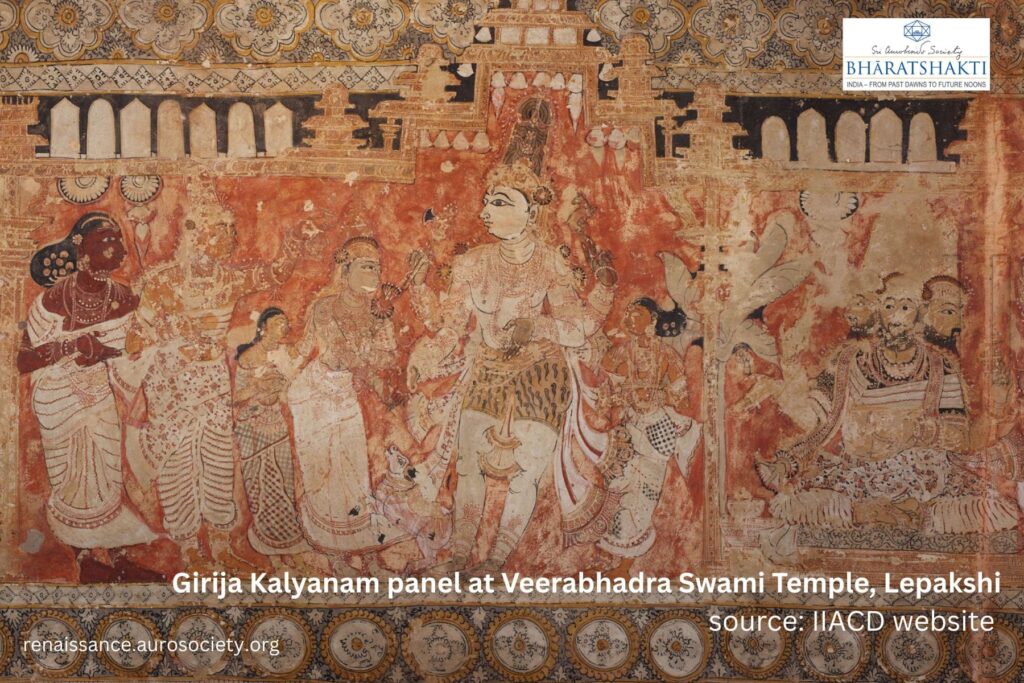Volume 1, Issue 7
Author: Nivedita Nambrath
Editor’s Note: A young Indian-American college student who recently visited Pondicherry and Auroville, writes about the elements that make a space sacred and how peace manifests in such sacred spaces.

In Indian culture, there is a clear concept of a sacred space.
Monasteries, ashrams, shrines, and temples are examples of spaces that possess a sanctified energy. This idea of a sacred space can be extended even into our own homes, into rooms that we maintain specially for the purpose of being domains of sanctity and peace. The kinds of sacred spaces vary broadly, but what they share is an innate ethos of peace.
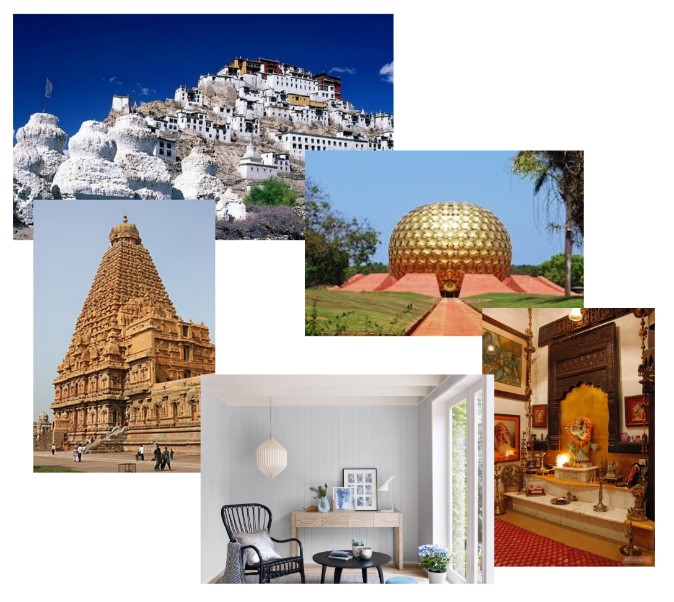
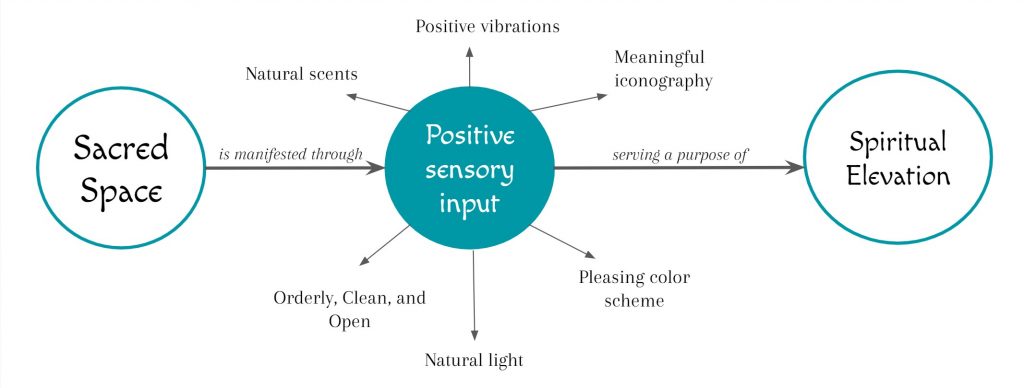
An ethos of peace is manifested through a careful consideration of how the elements in a space appeal to our senses. It is easy to choose to fill our spaces with things that please the senses in a superficial way – artificial scents, fluorescent lights, photographs and posters being a few examples. However, for a space to be sacred, the elements of a space must transcend mere sensory pleasure and must serve a purpose of spiritual elevation. These elements are united by their natural roots and the deeper way in which they touch our senses. Examples of these elements are investigated in the following sections.
Natural Scents

Incense or agarbatti, and camphor are ways in which natural scents are incorporated into temples in India. Agarbatti is made from an aromatic paste rolled around a stick, typically made of bamboo. The paste is usually made of a charcoal dust base. The materials are therefore all natural and chosen specifically for the meditative, purifying, and even medicinal properties that agarbatti can serve. Agarbatti sticks can take on medicinal value when made in accordance with Ayurvedic recipes.
Camphor is another way in which auspicious scents are brought into sacred spaces. Camphor has been used medicinally in India, and is described in the 7th century Ayurvedic work Madhavacikitsa to be an effective treatment for fever. In Hindu rituals, the burning of camphor is a way in which a space can be sanctified and made auspicious. In modern day life, diffusing essential oils is another way in which meaningful scents can be brought into a sacred space.
Positive Vibrations

Bells have been used in temples across India to sanctify a space with their uplifting vibrations. In recent times, a variety of instruments have gained popularity for their ability to create positive, sanctifying vibrations. One such instrument is the Tibetan singing bowl, pictured at left, which is used primarily in meditation.
The SVARAM sound studio in Auroville is full of instruments such as singing stones, gongs and wind chimes, all of which create powerful vibrations that ground us and sanctify a space.
Ancient Indian wisdom and modern science both show that sounds do not simply disappear after they are made; instead they are absorbed in the space around us. When a space is filled with positive vibrations, with clear frequencies manifested with positive intentions, rather than with noise, that space becomes more sacred. In our modern life, we can also use speakers to project sounds such as hymns, mantras, or recordings of natural sounds like ocean waves.
Iconography
India possesses a rich history of iconography, which is displayed in our various temples and sacred spaces. These icons, be they geometric symbols or intricate depictions of holy deities, are placed in sacred spaces because of the meaning they hold and the divine energy they are believed to impart. Many of these symbols are drawn in accordance with specific mathematical ratios.
Incorporating meaningful iconography into sacred spaces is thus a powerful means of connecting ourselves with a higher spiritual consciousness. Below are examples of a few icons in Indian spirituality.
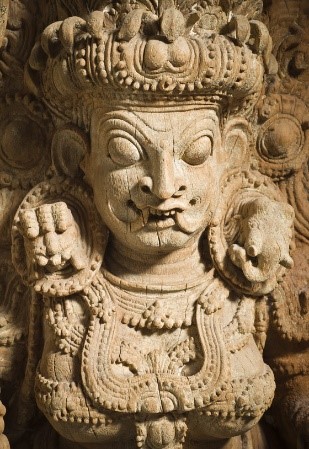
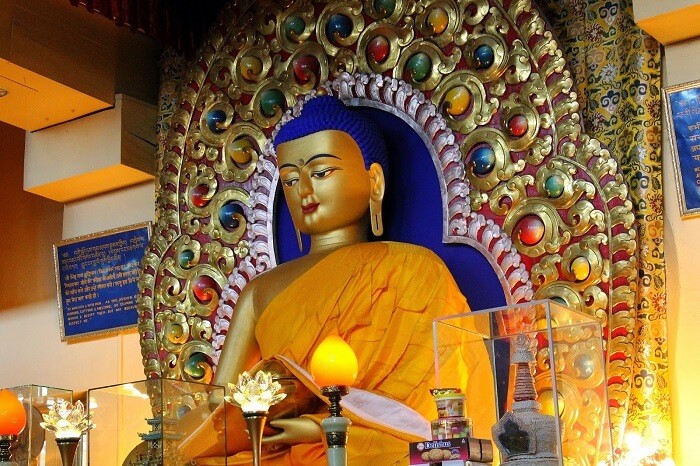

The images in the top row are of holy deities, which possess both spiritual symbolism and mythological meaning. The first image is a stone sculpture of the goddess Kali, this sculpture is currently in the collection of the Los Angeles County Museum of Art. The second is an image of the Buddha in the monastery of the Dalai Lama at Dharamshala. The third image is a bronze sculpture of the Nataraja, or Shiva’s cosmic dance.
The images in the bottom row are more geometric in nature. The first is the svastika, which is a general symbol of luck and prosperity, but has a variety of deeper religious meanings.
The second image is the Sri Yantra, a complex symbol made of nine interlocking triangles. The Sri Yantra has many meanings, including the union of Shiva and Shakti, as well as the unity of the macro-cosmos and the microcosmos. The third image is the Kala Chakra, a Buddhist mandala, which incorporates both illustrative and geometric figures. It is a representation of the wheel of time and is used for meditative purposes. And the final image shows the symbols of the Mother and Sri Aurobindo.


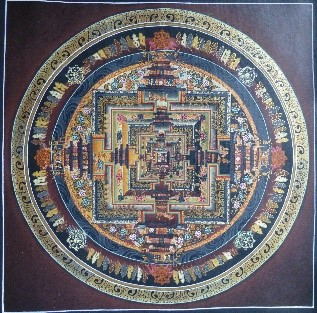

Colour Schemes
The colour schemes of Indian temples vary between being monochromatic, as in the beautiful white marble Jain temple of Ranakpur, and very colourful. The Matrimandir in Auroville is famous for its all-white inner chamber meant for silent concentration, while the Madurai Meenakshi temple is renowned for its vibrantly painted carvings.
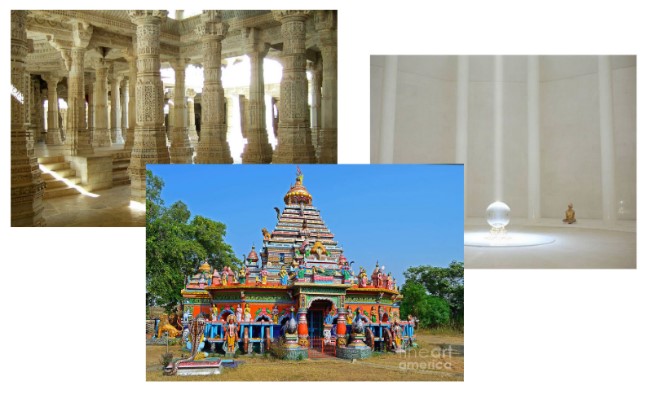
A monochromatic color scheme can pacify the mind and allow it to concentrate without distraction. On the other hand, a vibrant and polychromatic color palate can excite the imagination by representing the immense plurality in the manifestations of the one divine. So, there is no ‘right or wrong’ when it comes to the colors in a sacred space. They should simply be chosen with intention and with relevance to the purpose of the space.
Order, Cleanliness, and Open Concept Layout
The relationship between our environment and our state of mind is quite clear, and the simplest way to improve our environment is to ensure that it is tidy, uncluttered, and clean. Cleaning with selfless intentions is a form of karma yoga.
An example of this is the maintenance of the Golden Temple, where Sikhs work together to maintain the sanctity of their shared sacred space. Not only do clean spaces benefit our state of mind, but the discipline of cleaning benefits us spiritually as well.
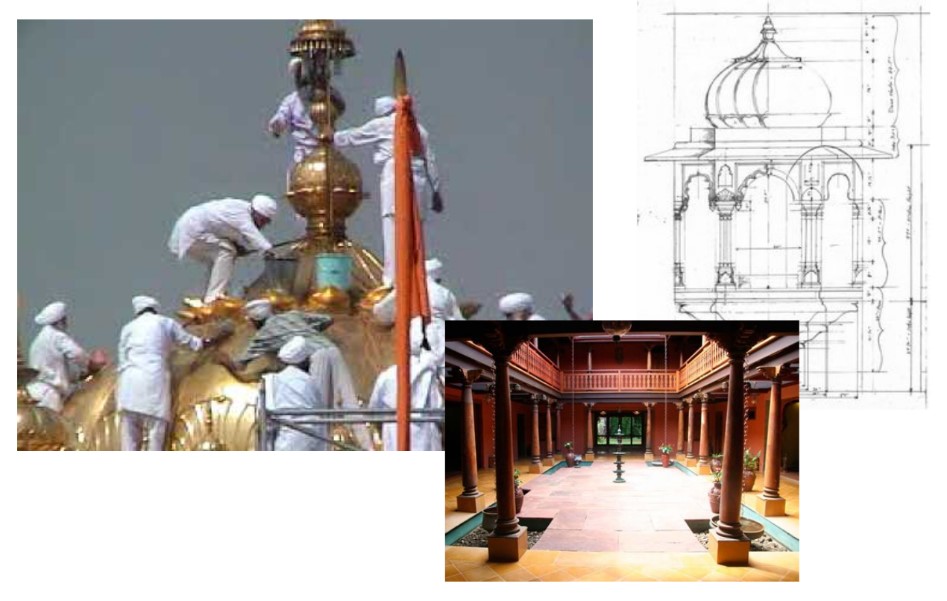
Another important aspect of a space’s order is its layout. Two features that are common in Indian architecture are an open concept layout and a unity with the outside world.
An open concept layout is one that has ample open space, and that does not feel confined. This goes hand in hand with a unity with the outside world, which can be established through wide open windows, archways that open onto the surrounding land, an absence of walls or boundaries, and large doorways.
Living in the modern world, these concepts can seem hard to bring into our apartments and houses. However, small things like opening the windows and letting in outside air and light can make a world of difference. Decluttering and establishing free space wherever possible are also important steps that can be taken. In an open concept space that is tidy and clean, the mind feels freer and more at ease.
With this understanding of how peace is manifested, one can build a sacred space of one’s own. In addition, one can appreciate the impact of the various subtle elements of sacred spaces in the world around us, and the role they play in our spiritual elevation.
All images selected by the author. Cover photo: Sacred Stones, by Suhas Mehra

